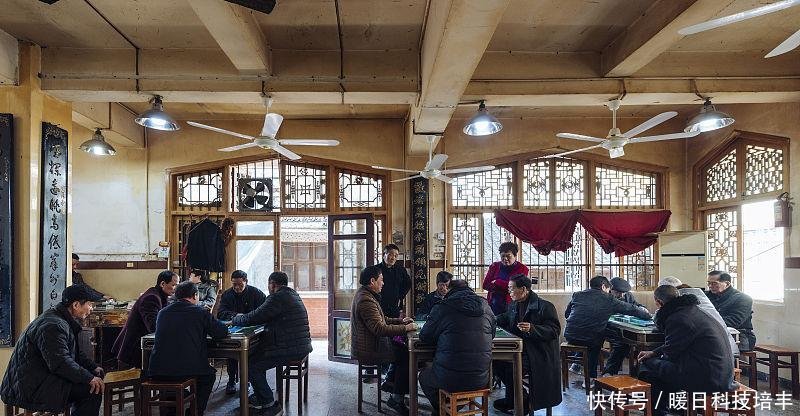еүҚиЁҖд»ҘеүҚйңҖиҰҒејӮжӯҘжү§иЎҢдёҖдёӘд»»еҠЎж—¶пјҢдёҖиҲ¬жҳҜз”ЁThreadжҲ–иҖ…зәҝзЁӢжұ ExecutorеҺ»еҲӣе»ә гҖӮеҰӮжһңйңҖиҰҒиҝ”еӣһеҖјпјҢеҲҷжҳҜи°ғз”ЁExecutor.submitиҺ·еҸ–Future гҖӮдҪҶжҳҜеӨҡдёӘзәҝзЁӢеӯҳеңЁдҫқиө–з»„еҗҲпјҢжҲ‘们еҸҲиғҪжҖҺд№ҲеҠһпјҹеҸҜдҪҝз”ЁеҗҢжӯҘ组件CountDownLatchгҖҒCyclicBarrierзӯүпјӣе…¶е®һжңүз®ҖеҚ•зҡ„ж–№жі•пјҢе°ұжҳҜз”ЁCompeletableFuture
- зәҝзЁӢд»»еҠЎзҡ„еҲӣе»ә
- зәҝзЁӢд»»еҠЎзҡ„дёІиЎҢжү§иЎҢ
- зәҝзЁӢд»»еҠЎзҡ„并иЎҢжү§иЎҢ
- еӨ„зҗҶд»»еҠЎз»“жһңе’ҢејӮеёё
- еӨҡд»»еҠЎзҡ„з®ҖеҚ•з»„еҗҲ
- еҸ–ж¶Ҳжү§иЎҢзәҝзЁӢд»»еҠЎ
- д»»еҠЎз»“жһңзҡ„иҺ·еҸ–е’Ңе®ҢжҲҗдёҺеҗҰеҲӨж–ӯ
//дҪҝз”ЁеҶ…зҪ®зәҝзЁӢForkJoinPool.commonPool()пјҢж №жҚ®supplierжһ„е»әжү§иЎҢд»»еҠЎpublic static <U> CompletableFuture<U> supplyAsync(Supplier<U> supplier)//жҢҮе®ҡиҮӘе®ҡд№үзәҝзЁӢпјҢж №жҚ®supplierжһ„е»әжү§иЎҢд»»еҠЎpublic static <U> CompletableFuture<U> supplyAsync(Supplier<U> supplier, Executor executor)1234ж №жҚ®runnableеҲӣе»әCompletableFutureд»»еҠЎ//дҪҝз”ЁеҶ…зҪ®зәҝзЁӢForkJoinPool.commonPool()пјҢж №жҚ®runnableжһ„е»әжү§иЎҢд»»еҠЎpublic static CompletableFuture<Void> runAsync(Runnable runnable)//жҢҮе®ҡиҮӘе®ҡд№үзәҝзЁӢпјҢж №жҚ®runnableжһ„е»әжү§иЎҢд»»еҠЎpublic static CompletableFuture<Void> runAsync(Runnable runnable, Executor executor)1234- дҪҝз”ЁзӨәдҫӢ
ExecutorService executor = Executors.newSingleThreadExecutor();CompletableFuture<Void> rFuture = CompletableFuture.runAsync(() -> System.out.println("hello siting"), executor);//supplyAsyncзҡ„дҪҝз”ЁCompletableFuture<String> future = CompletableFuture.supplyAsync(() -> {System.out.print("hello ");return "siting";}, executor);//йҳ»еЎһзӯүеҫ…пјҢrunAsync зҡ„future ж— иҝ”еӣһеҖјпјҢиҫ“еҮәnullSystem.out.println(rFuture.join());//йҳ»еЎһзӯүеҫ…String name = future.join();System.out.println(name);executor.shutdown(); // зәҝзЁӢжұ йңҖиҰҒе…ій—ӯ--------иҫ“еҮәз»“жһң--------hello sitingnullhello siting1234567891011121314151617181920еёёйҮҸеҖјдҪңдёәCompletableFutureиҝ”еӣһ//жңүж—¶еҖҷжҳҜйңҖиҰҒжһ„е»әдёҖдёӘеёёйҮҸзҡ„CompletableFuturepublic static <U> CompletableFuture<U> completedFuture(U value)122 зәҝзЁӢдёІиЎҢжү§иЎҢ
ж–Үз« жҸ’еӣҫ
гҖҗејӮжӯҘзј–зЁӢдёҚдјҡпјҹжҲ‘ж•ҷдҪ е•ҠпјҒCompletableFutureгҖ‘
д»»еҠЎе®ҢжҲҗеҲҷиҝҗиЎҢactionпјҢдёҚе…іеҝғдёҠдёҖдёӘд»»еҠЎзҡ„з»“жһңпјҢж— иҝ”еӣһеҖј
public CompletableFuture<Void> thenRun(Runnable action)public CompletableFuture<Void> thenRunAsync(Runnable action)public CompletableFuture<Void> thenRunAsync(Runnable action, Executor executor)123- дҪҝз”ЁзӨәдҫӢ
CompletableFuture<Void> future = CompletableFuture.supplyAsync(() -> "hello siting", executor).thenRunAsync(() -> System.out.println("OK"), executor);executor.shutdown();--------иҫ“еҮәз»“жһң--------OK123456д»»еҠЎе®ҢжҲҗеҲҷиҝҗиЎҢactionпјҢдҫқиө–дёҠдёҖдёӘд»»еҠЎзҡ„з»“жһңпјҢж— иҝ”еӣһеҖјpublic CompletableFuture<Void> thenAccept(Consumer<? super T> action)public CompletableFuture<Void> thenAcceptAsync(Consumer<? super T> action)public CompletableFuture<Void> thenAcceptAsync(Consumer<? super T> action, Executor executor)123- дҪҝз”ЁзӨәдҫӢ
ExecutorService executor = Executors.newSingleThreadExecutor();CompletableFuture<Void> future = CompletableFuture.supplyAsync(() -> "hello siting", executor).thenAcceptAsync(System.out::println, executor);executor.shutdown();--------иҫ“еҮәз»“жһң--------hello siting1234567д»»еҠЎе®ҢжҲҗеҲҷиҝҗиЎҢfnпјҢдҫқиө–дёҠдёҖдёӘд»»еҠЎзҡ„з»“жһңпјҢжңүиҝ”еӣһеҖјpublic <U> CompletableFuture<U> thenApply(Function<? super T,? extends U> fn)public <U> CompletableFuture<U> thenApplyAsync(Function<? super T,? extends U> fn)public <U> CompletableFuture<U> thenApplyAsync(Function<? super T,? extends U> fn, Executor executor)123- дҪҝз”ЁзӨәдҫӢ
ExecutorService executor = Executors.newSingleThreadExecutor();CompletableFuture<String> future = CompletableFuture.supplyAsync(() -> "hello world", executor).thenApplyAsync(data -> {System.out.println(data); return "OK";}, executor);System.out.println(future.join());executor.shutdown();--------иҫ“еҮәз»“жһң--------hello worldOK1234567891011thenCompose - д»»еҠЎе®ҢжҲҗеҲҷиҝҗиЎҢfnпјҢдҫқиө–дёҠдёҖдёӘд»»еҠЎзҡ„з»“жһңпјҢжңүиҝ”еӣһеҖј- зұ»дјјthenApplyпјҲеҢәеҲ«жҳҜthenComposeзҡ„иҝ”еӣһеҖјжҳҜCompletionStageпјҢthenApplyеҲҷжҳҜиҝ”еӣһ UпјүпјҢжҸҗдҫӣиҜҘж–№жі•дёәдәҶе’Ңе…¶д»–CompletableFutureд»»еҠЎжӣҙеҘҪең°й…ҚеҘ—з»„еҗҲдҪҝз”Ё
public <U> CompletableFuture<U> thenCompose(Function<? super T, ? extends CompletionStage<U>> fn) public <U> CompletableFuture<U> thenComposeAsync(Function<? super T, ? extends CompletionStage<U>> fn)public <U> CompletableFuture<U> thenComposeAsync(Function<? super T, ? extends CompletionStage<U>> fn,Executor executor)1234
жҺЁиҚҗйҳ…иҜ»
-
-
-
-
-
-
-
-
-
-
-
-
-
-
-
-
-
-
-
-
- еҸІд№ҰдёҠдёҚдјҡе…¬ејҖзҡ„еҺҶеҸІзңҹзӣё дёӯеӣҪеҸӨд»ЈеҺҶеҸІжңӘи§Јд№Ӣи°ң
- и‘Ўиҗ„дјҡдёҚдјҡдёҠзҒ« еҗғиҗ„и‘ЎдјҡдёҚдјҡдёҠзҒ«
- жҳҺе№ҙдјҡдёҚдјҡе№Іж—ұ еҶ¬еӨ©дёәд»Җд№Ҳдјҡе№Іж—ұ
- д»Ҡе№ҙеҶ¬еӨ©дјҡдёҚдјҡеҫҲеҶ·2021 2021жҳҜдёҚжҳҜжңҖеҶ·зҡ„еҶ¬еӨ©
- зҪ‘зј–еҹәзЎҖпјҢжҲ‘еҸӘзңӢиҝҷзҜҮж–Үз« пјҢзҪ‘з»ңзј–зЁӢеҹәзЎҖзҜҮ
- Win10е°ҶеҺҹз”ҹе…је®№е®үеҚ“AppпјҢдҪҶжЁЎжӢҹеҷЁдёҚдјҡиў«жү“иҙҘ
- еҢ–еҰҶ|вҖңдјҡеҢ–еҰҶвҖқдёҺвҖңдёҚдјҡеҢ–еҰҶвҖқзҡ„еҘідәәпјҢзңӢзңүжҜӣе’ҢеҸЈзәўе°ұзҹҘйҒ“пјҡе·®еҲ«еӨӘеӨ§
- иҮӘеҠЁеҠ зғӯзҡ„жіЎи„ҡжЎ¶дјҡжјҸз”өеҗ— жіЎи„ҡжЎ¶дјҡдёҚдјҡжјҸз”өиҮҙжӯ»
- еҸЈи…”зәӨз»ҙеҢ–жҲ’жҺүж§ҹжҰ”дјҡдёҚдјҡжҒўеӨҚ? еҗғж§ҹжҰ”дёәд»Җд№ҲдјҡеҜјиҮҙеҸЈи…”зәӨз»ҙеҢ–
- selsunжҙ—еҸ‘ж°ҙдјҡдёҚдјҡи„ұеҸ‘ selsunжҙ—еҸ‘ж°ҙеҸҜд»Ҙй•ҝжңҹдҪҝз”Ёеҗ—



![[еӨ©еӨ©еҶ·з¬‘иҜқ]жҷәж…§зҡ„з”·дәәж°ёиҝңи®©иҖҒе©Ҷи§үзҡ„еҘ№жҳҜзҺӢиҖ…пјҢжҗһ笑GIFзӮ№иҜ„пјҡеӨ«еҰ»ж–—жі•](https://imgcdn.toutiaoyule.com/20200321/20200321143942389282a_t.jpeg)









![[дёӯеӣҪе»әи®ҫжҠҘдә§з»ҸжҠҘйҒ“]е°Ҹ规模зәізЁҺдәәеўһеҖјзЁҺзҺҮз”ұ3%йҷҚиҮі1%пјҢ3жңҲ1ж—ҘиҮі5жңҲ31ж—Ҙ](https://imgcdn.toutiaoyule.com/20200323/20200323092705961753a_t.jpeg)
